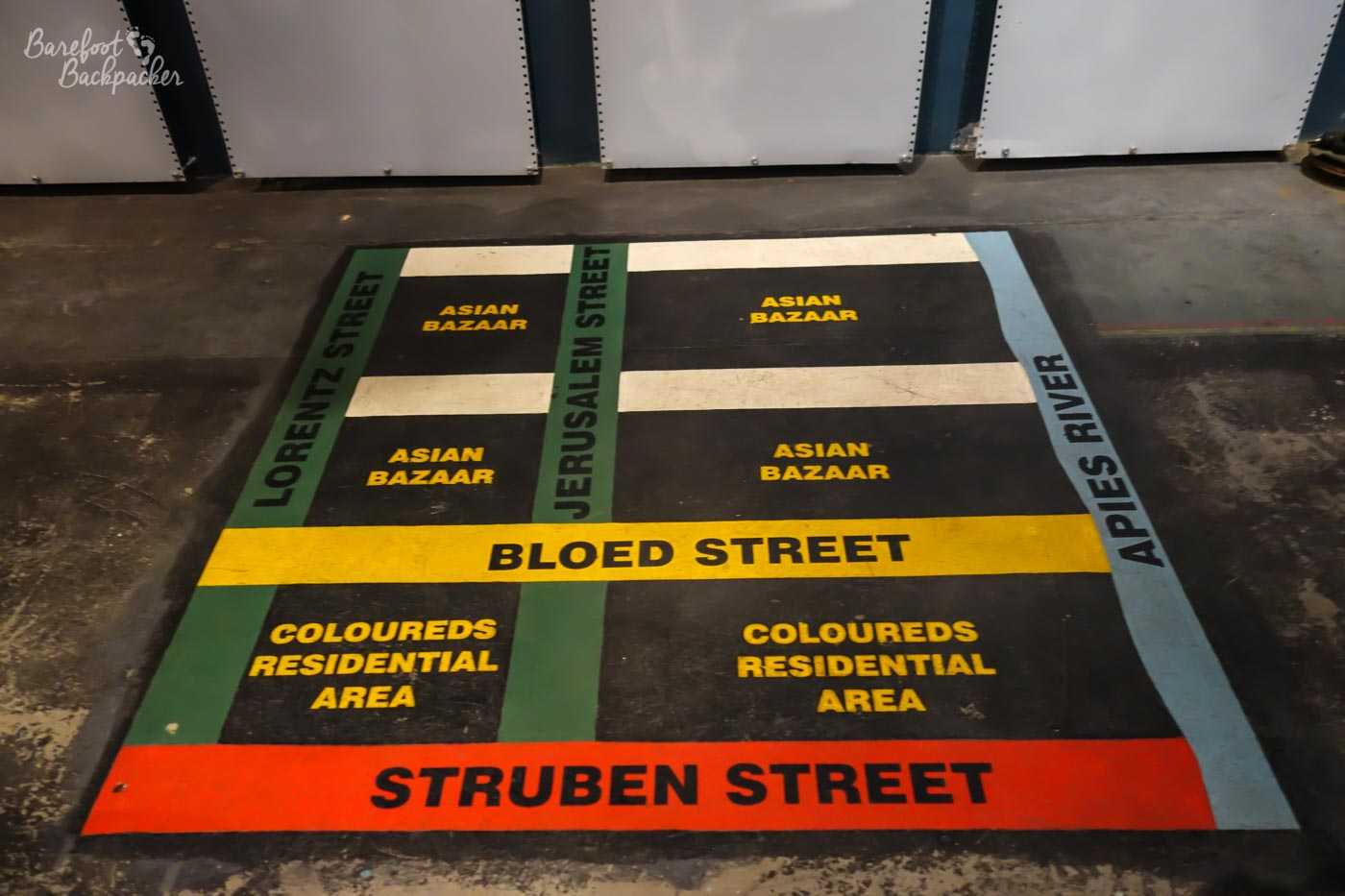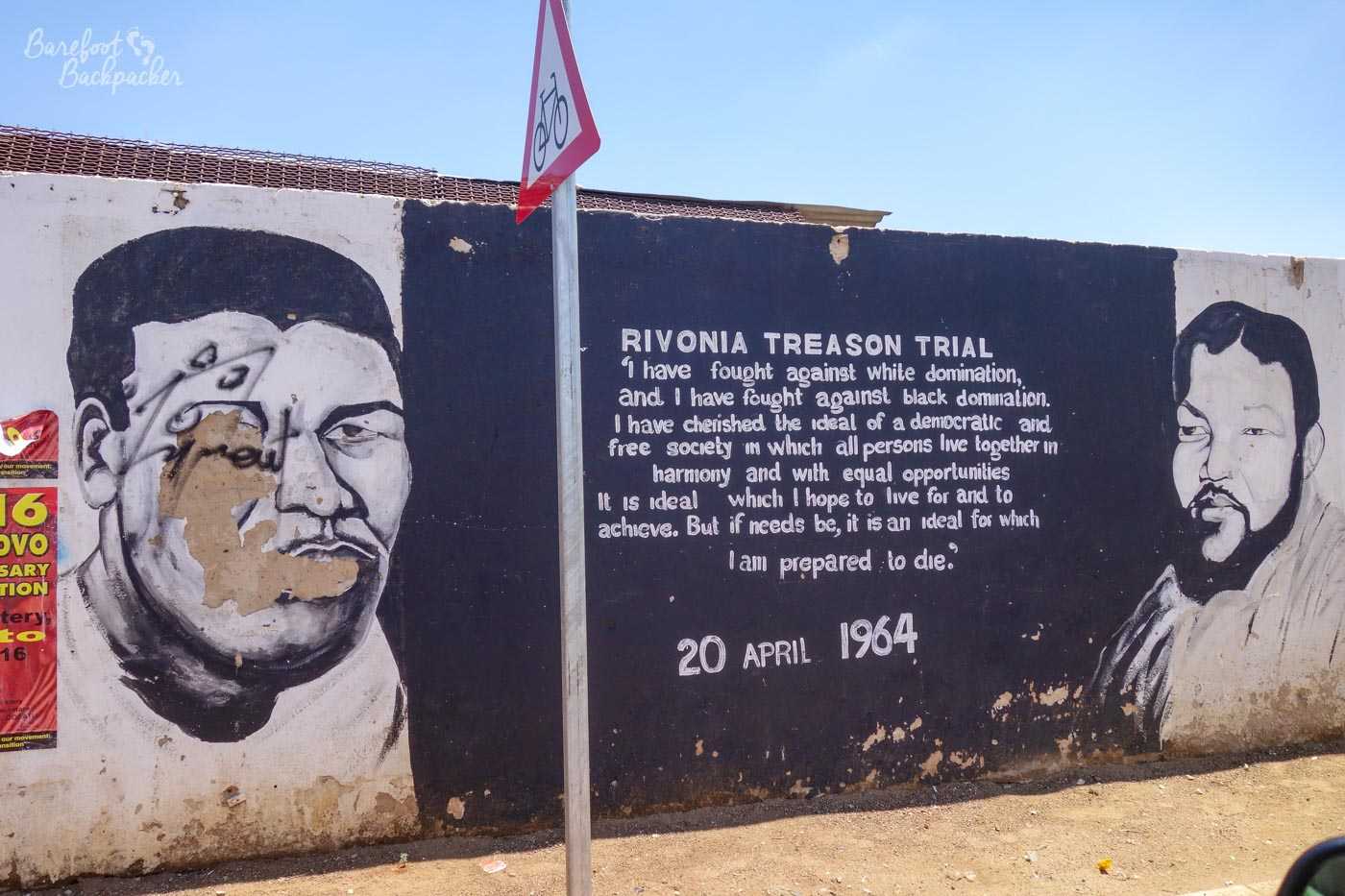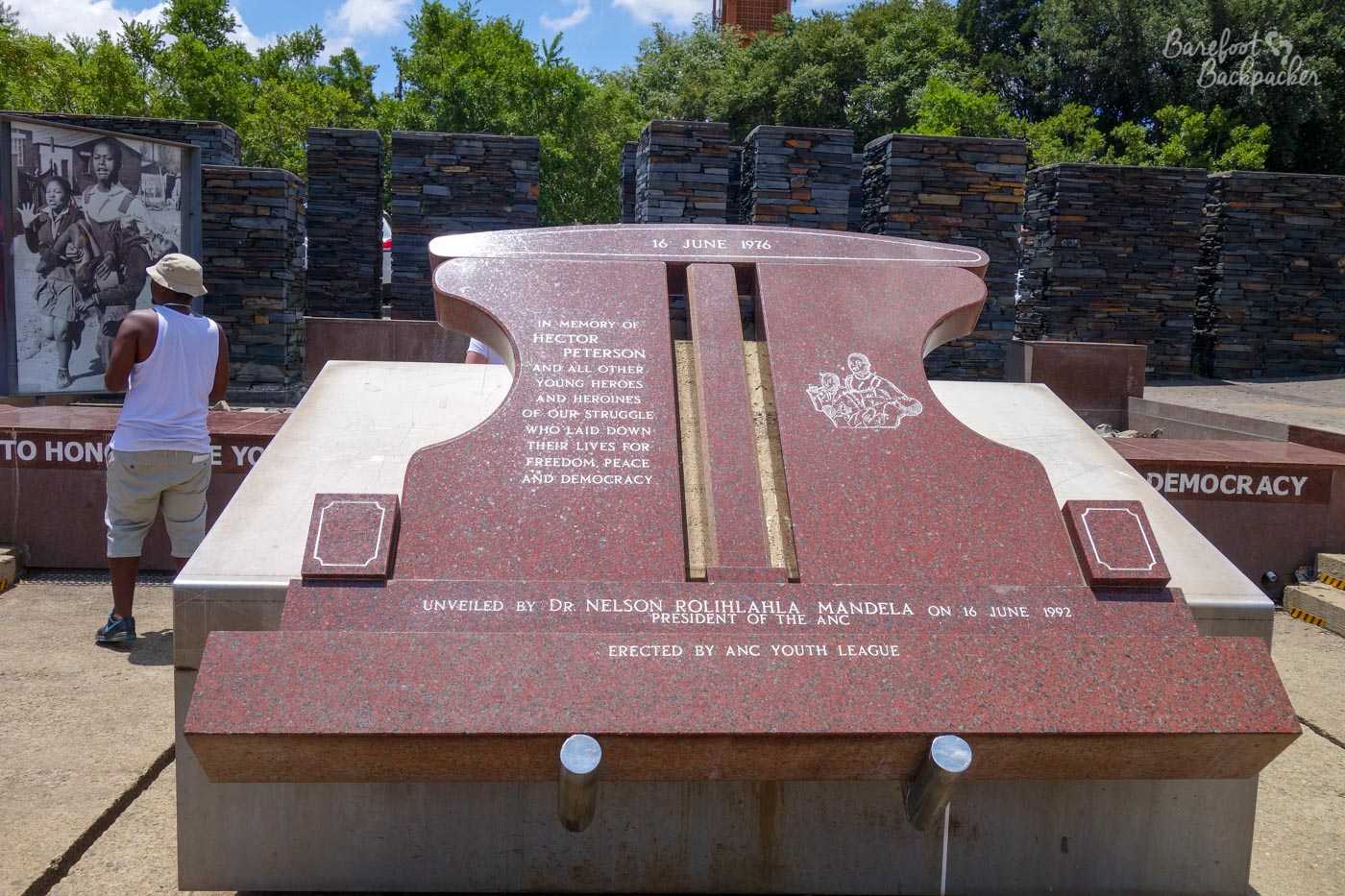When I mentioned about Apartheid on my Twitter timeline, I assumed it was a reference that everyone understood and could grasp. However, I quickly found that relatively few people who follow me had heard much about it, which quite surprised me as it’s one of the most fundamental concepts of the 20th Century. It turns out though that it’s not generally taught these days in schools in the UK, and because it’s a concept more-or-less in history, it’s rarely mentioned on the news.
Amongst other things, this made me feel old. Surely knowing where you were when Nelson Mandela was released from prison is one of those things that most people can relate to. Although knowing that there was less than ten years between that and John Lennon getting shot reinforces my Gen-X credentials over my mostly Millennial Twitter friends.
However, it would be hard (and possibly irresponsible) to visit South Africa and not know or appreciate a little about its background, as in a very real sense it’s what’s made the country the way it is today. Obviously I’m neither a South African historian, nor a historian of South Africa, so I’m not qualified to give an in-depth analysis on every little detail, but hopefully this gives a brief and overly simplistic overview, in much the same way as 4th-grade biology teachers talk about gender so as to give you a vague idea but which people who never progress in the subject seem to take as gospel.
The word “Apartheid” is an Afrikaans word and effectively means “the fact of keeping things apart”. In terms of South African policy, the word was first coined at the end of the 1920s, but by then the train of policies enacting it were already in place. The basic principle was simple – ensure a racially-segregated society, so the different races of people never mixed. Partly this could be seen to ensure racial harmony (if Blacks and Whites don’t mix, there can be no trouble), but let’s be honest, when you have a White (ex-)colonial government passing laws in a majority Black state, there’s only one reason for ensuring segregation, with a view to being able to treat each segregated group differently, and it’s in no way benign.
It would be so easy to blame Cecil Rhodes, of course, so let’s in part do that. During his premiership in Cape Colony, he was responsible for enacting a number of pieces of legislation that restricted amount of land people (native Blacks) could hold, and restricting the right to vote on certain levels of land ownership. This was in the 1890s, so even this far back in time you can already see where this was headed – this is also one major reason why South Africans are so heavily critical of him. Further acts in the next couple of decades built on this – restricting land ownership by Blacks to certain designated areas of the country, and putting limits on what kind of jobs they could do – but the bulk of legislation that came to define Apartheid came in the immediate post-war period, after the National Party, led by Daniel Malan, came to power on an entire manifesto of racial discrimination. You’d have thought that, given this was 1948, the concept of using race as a political tool had just been resoundly defeated, but no-one seems to have told specifically the Boer farmers of northern South Africa. However, neither Malan nor his successor (Johannes Strijdom) were Nazis. They were just … well, white supremacists, and, as an aside, anti-British as well as anti-Black; just as the UK still fights World War Two deep into the 21st Century, so they were still fighting the Boer War some fifty years later.
This legislation included: formally classifying race and introducing ID cards defining it; defining specific areas of the country where each race could live (it may come as no surprise to learn this split was not done equally, in terms of either size or natural resources); the separation of services by race – this is when signs like ‘This beach is for Whites only’ appeared; the gradual exclusion of non-whites from the political process; and the slow establishment of autonomous black homelands (‘Bantustans’), the ultimate goal being to separate out Blacks from Whites completely thus rendering Blacks as ‘no longer South Africa’s problem’. Legislation was followed up by action, often involving forcible removal of entire suburbs of people (usually Black) from places where they’d been living for centuries but just happened to be the wrong side of the new line drawn, and into whole new ‘townships’ built quickly and, generally, cheaply and badly, in less-than-ideal places. This is the origin of the ‘townships’, which later became a by-word for the whole Apartheid regime.

Floor plan of a segregated suburb of Johannesburg, in the early days of Apartheid
It wasn’t just the native Black population that the Apartheid regime differentiated and discriminated against; there were also people who fitted into neither category that the government decided should be classified into the miscellaneous pot that is ‘Coloured’. This included, amongst others, the large Indian immigrant workforce in cities like Durban, and people with mixed ancestry. At times classification was arbitrary – whether you were Black or Coloured depending on things as hairstyle and native language; it was not unknown for people in the same family to be classified differently, and therefore separated, as Coloureds had different rights and homelands to the Black population. Slightly more rights, but that’s not really saying a great deal.
An early attempt to fight back against the regime took place in June 1955. The ANC (African National Congress – one of the leading Black-fronted opposition groups to the regime, and founded as early as 1912) drew up a list of demands on a document that they wanted to see implemented in South Africa. These included, amongst others, giving everyone the right to vote, ensuring everyone was treated equally before the law, free and universal education, a national health service, and a policy of nationalising important state industries. They called it the “Freedom Charter” and they launched it in front of around 3,000 delegates and 7,000 observers at the “Congress of the People”, in a large square in downtown Soweto. This was met with derision by the government, who declared the Congress illegal, banned distribution and reference to the Charter, and put over 150 leading activists involved with it (including Walter Sisulu) on trial for treason – for the record, after a four year trial they were all acquitted.
This was merely the mildest example of how legislation and discrimination worked in Apartheid South Africa, and how it was backed up by the force of law; the powers invested in the state police and armed forces were generally harsh and strong. One of the earliest examples of this in the Apartheid era was the famous and seminal Sharpeville Massacre, so notable we even studied it in GCSE History. It started as a large protest against the Pass Laws – the laws that required Blacks and Coloureds to have and carry what effectively amounted to internal passports listing their name, their address, their employer’s name, whether they had rights to visit certain other areas outside their normal township, and other character and personality traits; these had to be presented whenever requested by the police, under threat of arrest and detention. Many demonstrations had been held against them, and other laws, in the years following their implementation (1923, but made stricter several times since), but on 21 March 1960 in the township of Sharpeville, a huge crowd, maybe some 7,000 strong, marched on the streets to protest at the police station. Some were armed with stones, to face the police who were armed with sub-machine guns and repeating rifles. Officially no-one’s quite sure what happened first, but both sides used their weapons, with the not-unexpected outcome of a believed 69 protestors killed and 180 injured. This toll includes women and children who were running away from the massacre as it was ongoing.
This was the pivotal moment in the history of Apartheid. The government used the ‘disorder’ to declare a State Of Emergency, giving unprecedented and much stronger powers to the police force, which lasted on-and-off until the end of the regime. They also banned certain resistance groups, including the ANC (led by figures such as Walter Sisulu and Nelson Mandela) and the PAC (‘Pan African Congress’, led by Robert Sobukwe), all of whom had been arrested and imprisoned within the next couple of years. In return, the ANC and PAC decided that peaceful passive resistance to Apartheid was probably unworkable and they set about more active measures; while this initially meant they concentrated on acts of industrial sabotage rather than actively targeting the (White) population, they specifically reserved the right to do so if necessary. Remember folks, sometimes the terrorists are the good guys,

Part of Nelson Mandela’s speech at his trial in 1964, as written on a wall in Soweto. Though the death penalty was mooted, he was instead imprisoned for life. Or 26 years, as it turned out.
This was also the moment the International community lost respect for the regime; the UN passed a resolution expressing concern, and the Commonwealth of Nations kicked South Africa out a year later. It wasn’t all bad for the Apartheid government though; Wikipedia tells me that the House of Representatives of the US State of Mississippi passed a resolution supporting the South African government for effectively doing what was deemed necessary to continue the policy of segregation. Because Mississippi.
This wasn’t the only internationally-criticised massacre involving children in the history of Apartheid either – in 1976 in Soweto, there was a protest amongst schoolchildren (we’re taking High School, say 11-16 year-olds) which became known as the Soweto Uprising. It began as a series of strikes, walk-outs if you will, from schools across South African townships in protest at government legislation that would enforce the teaching of lessons in the Afrikaans language rather than local Black languages. The government’s view was the constitution stated English and Afrikaans were the only official languages of the country and therefore all education should be in one of these languages (there was a bit of a side issue too that the government felt too much prominence was being given to English as a medium). Many in the Black community saw this as being forced to learn the language of the oppressor, and felt it was being done to further demean and eradicate Black culture in deference to the White Man.
The first walkout occurred at the end of April 1976; they spread across Soweto in the following days and weeks, until one prominent student agitator, Teboho Mashinini, decided it was time to organise a mass day of protest, which he scheduled for 16 June. It’s unclear quite how many students took part, but best estimates but the figure a couple of thousand either side of 10,000, all from local schools, all marching through Soweto.
The police response was … predictable, violent, and deadly; it’s believed around 23 people were killed on that first day, including a boy called Hector Pieterson, a photo of whom dying and being carried away was taken by the journalist Sam Nzima and ended up ‘going viral’, or at least as much as that meant in 1976. The initial killings led to riots across both Soweto and other townships in the country that lasted several months, and saw several hundred deaths.

Part of the Hector Pieterson Memorial in Soweto.
Thus oppression, protest, and anger was the situation for forty years, including much of my childhood. I distinctly remember news reports from the Townships in the 1980s, showing the effects of government policy, the State of Emergency, and the resulting anger of the people, almost certainly provided by Michael Buerk, or at least until the South African government expelled him for being too … well, honest.
Politically, after Strijdom came Hendrik Verwoerd, who may have been a Nazi (or at least he lost a legal case when the English-language South African newspaper The Star newspaper called him one) – he tightened the grip of Apartheid (and was in charge during the Sharpeville Massacre) until he was assassinated by a communist agitator, and was succeeded by John Vorster, who very definitely was a Nazi, or at least he had been a leading member of the South African equivalent during the Second World War – and it was he who was in charge during the Soweto Uprising. This didn’t stop a Boer called Eugene Terre’Blanche from setting up a military organisation and pressure group (the AWB) in the 1970s because he thought Vorster was too left-wing and pandering too much to the Blacks. Imagine, a Nazi being considered too liberal.
Vorster lost power in a corruption scandal, to be replaced by P W Botha, remembered mainly for doggedly clinging to the apartheid regime despite by this point the rest of the world noticing what was going on and criticising the government, withholding aid, imposing sanctions on trade, restricting cultural and sporting links (South Africa was effectively banned from any kind of international competition for over twenty years, and musicians and film directors pretty much blanketly refused to even have their output allowed to be sold there, never mind do any publicity or touring). Help only came from those stalwarts of world liberalism, the UK, the USA, and Israel, the latter with whom there was an urban rumour of collaboration on building a nuclear bomb, but this was never formally confirmed. The boycotts, alongside the ongoing State of Emergency and general level of protest in the townships made the country an economic wilderness, barely functioning outside the barrel of a gun.
Botha had a stroke in 1989 and was ‘encouraged’ to resign; within five years not only was Apartheid completely legally dismantled, but South Africa had its first Black President (Nelson Mandela, of course). It’s quite amazing to think that despite it being in place so long, the whole system collapsed very quickly.
While Apartheid has been consigned to the history books, and the once-banned ANC came to power and implemented many of the features of the Freedom Charter (although not the bits about nationalising industry, because this was the 1990s and Capitalism Rulez OK), the legacy of Apartheid lingers, and there does still feel a separation between White and Black. Largely this is seen more in the White communities, who never quite got over the fact they’re no longer God’s Gift To South Africa and instead are just normal citizens like everyone else. Many of them still live in the past, who may tell you that the townships are violent, completely unsafe, especially for tourists. They may tell you that it’s dangerous to walk in the cities at night, and that everyone lives in houses protected by electric fences and even security guards because it’s the only way they can sleep at night without the fear of aggravated burglary. They may even tell you to avoid the Johannesburg area completely and spend all your time in Cape Town.
As an aside, it’s also interesting to note that in the years following the fall of Apartheid, there was almost a ‘white flight’ out of South Africa; many White South Africans feeling that Black majority rule was tantamount to a ‘reverse apartheid’ and feeling they could no longer live in a country where they had the perception of feeling ‘hated’, and ‘discriminated against’. An estimate of a couple of million people emigrated, but what’s notable is where they went. The SA Race Relations Board suggested around 840,000 White South Africans left in the ten-year period between 1995 and 2005 for that last bastion of White Supremacy, Australia. It kind of says a lot about Australia if White Nationalists and Apartheid supporters feel it’s a home-from-home. I am, of course, contractually obliged to not talk about Nauru.
Apartheid, then, was the continuing presence of old colonial polices into the modern era, and only a combination of internal insurrection and external pressure of more-or-less the entire world saw it quickly draw to a close. Or maybe they just ran out of Nazis.